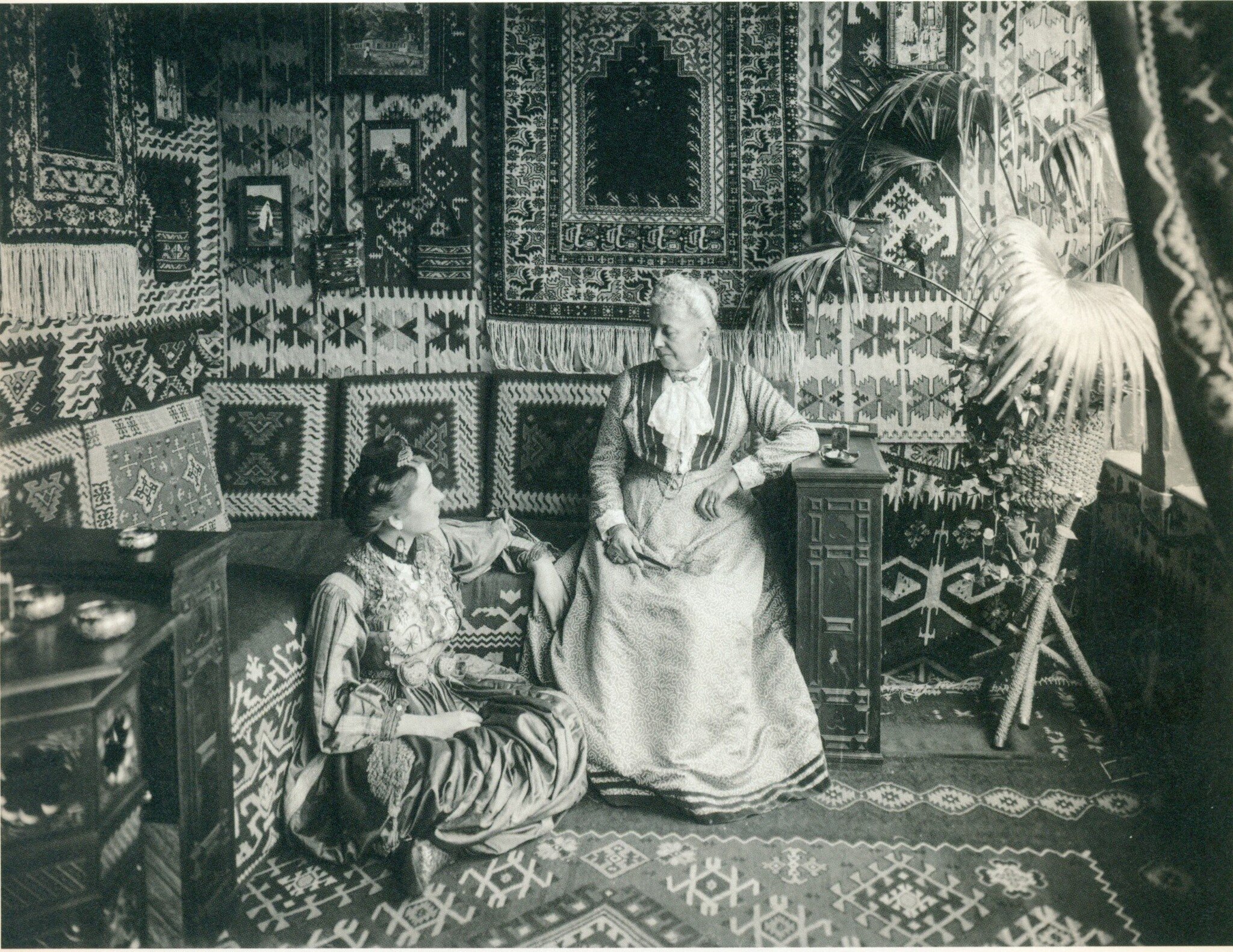
BOSNIAN PRAYER RUG - SAJJADA
Author: Fatima Kadić-Žutić, PhD, Faculty of Islamic Studies of University of Sarajevo • Photo: Archive

Sajjadas are rugs of small dimensions, 150 cm long and 90-120 cm wide, which served to isolate the worshipper from possible dirt on the ground when performing the basic Islamic ritual, daily prayer, or to mark the direction of qibla on the wall. The motif which most often, though not necessarily, characterized the design of the sajjada is the mihrab/niche or the arch which points to the direction of qibla. In the mihrab, there is often a representation of a lamp or a tree, both of which are motifs mentioned in the 35th ayat of the Qur'anic sura An-Nur (Light): Allah is the Light of the heavens and the earth. The likeness of His light is as a niche in which is a lamp, the lamp is in glass, the glass is as it were a brightly shining star, lit from an oil of a blessed tree that is neither in the east nor in the west. The oil whereof gives light of its own, even if no fire touches it. It is a light upon light! Allah delivers to His light whom He wills and Allah sets forth parables for mankind. And Allah is All-Knowing for everything. (Translated by: Imam Iskender Ali Mihr).
A kind of prayer rug has been used from the very beginnings of Islamic history. Credible hadith collections note that in the time of Prophet, p.b.u.h. (peace be upon him), people used prayer mats woven of palm leaves, which were big enough that sajdah could be performed on them, and they were called bisat, hasir and humra and that sometimes tanned animal skin (ferva medbuga) was also used. Across the Muslim world, and thus in Bosnia as well, skins of sacrificial sheeps (qurban) were not sold but rather used to make soft prayer mats, postekije (from Persian word 'post' – skin). “It is qurbansˮ, says Prophet, p.b.u.h., “who will take you over the As-Sirat bridge” (Ahmed). They were used in cities, but particularly in mountainous regions, where they protected worshippers from the cold of the floor during long and cold winters. The image of a postekija hung on the wall takes us to homes of our grandfathers and grandmothers, where we prayed sinking in its soft warmth.
The term sajjada draws origin from Arabic verbal root s-j-d and refers to the place where sajdah is performed.
Bosnian sajjadas can be classified into three groups:
- slit-tapestry woven (kilim) and knotted-pile sajjadas woven at homes,
- slit-tapestry woven and knotted-pile sajjadas woven in the Sarajevo Carpet Factory and
- Banja Luka sajjada, made by combining techniques of appliqué and embroidery.
The design of the first group of Bosnian sajjadas is simple, without many ornaments (Figures 1, 2, 3, 4). They reflect influences of Anatolian and Sharkoy (Pirot, Chiprovtsi) sajjadas, although their expression is simple, ornamentation is uncrowded, and the field of mihrab is typically executed in one color. On these sajjadas one can discern the fineness of dying with natural dyestuff and charming irregularities which the weaver made while executing the pattern without a template. Each weaver left her personal stamp on the sajjada making it with more or less weaving skill.
Bosnian homemade knotted-pile sajjadas were woven on the woolen warp and weft. Wool of the warp is typically of better quality and thinner, while wool of the weft and knots is thicker. Between knots one can discern three to five shots of weft. The number of knots is small, about 200 per dm², the knot is symmetrical, with a long fleece which sometimes leaves a curly effect. These sajjadas are heavy, thick and have a soft handle; they are intended to replace the warmth and softness of the postekija during cold Bosnian winters (Figures 5, 6, 7, 8).
With respect to the second group of Bosnian sajjadas woven in the Sarajevo Workshop, it was only recently, after the campaign of collecting sajjadas and kilims preserved in Sarajevo mosques, that we had the opportunity to realize what wealth has been woven in our region (Figures: 12, 13, 14, 15). World experts whom we asked to reveal the affiliation of the found examples assumed that they are Anatolian workshop sajjadas from the 19th and the 20th century.
However, close inspection of photographs of showrooms of the Sarajevo Workshop and of some other photographs of historical events revealed that these sajjadas were most probably woven in the Sarajevo Workshop (Figures 9, 10, 11). They are copies of Anatolian workshop sajjadas of the 18th, 19th and 20th centuries, as well as of Persian sajjadas of the same period. The fact that they are over a hundred years old gives them the status of antiques and a thorough research still remains to be conducted. A significant example, made in 1915, is a special custom-made sajjada woven of high-quality wool of Angora goat, which has about 4,600 knots per dm² (Figure 15). Elegant tapestry sajjadas were also woven in Sarajevo Carpet Factory (Figure 16).
In the group of appliqué sajjadas in our cultural-artistic history a particular significance is attached to Banja Luka sajjada. It is the only artistic item from the Ottoman period named after a Bosnian toponym and, as such, it has remained well-known and acknowledged in the whole world up to this day. A glance at its design gives a general impression of floral abundance, reminding of Muslims descriptions of Jannah (paradise).


